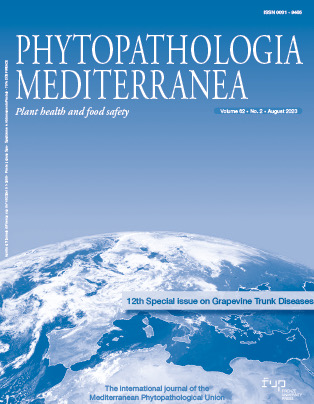Grapevine histological responses to pruning: the influence of basal buds on tissue defence reactions
Published 2023-09-15
Keywords
- Pruning,
- wood anatomy,
- tyloses,
- early tissue defence reactions
How to Cite
Copyright (c) 2023 Sara FALSINI, Samuele MORETTI, Enrico BATTISTON, Corrado TANI, Alessio PAPINI, Giuseppe CARELLA, Marco NOCENTINI, Laura MUGNAI, Silvia SCHIFF

This work is licensed under a Creative Commons Attribution 4.0 International License.
Abstract
Grapevines require pruning procedures to maintain plant morphology and ensure productivity, and these procedures cause wounds that induce physical and biological host defence mechanisms. Grapevine tissue reactions to wounding resulting from four different pruning methods were assessed. Rapid (immediate) defence reactions were detected in 1-year-old canes with preserved basal buds. Formation of tyloses (≈ 90% of xylem vessels) was observed 1 month later on canes where the basal buds were maintained and no short stubs were left (i.e. the pruning cuts preserved the buds). At 2 months after pruning, lignin was slightly increased in cortical parenchyma after pruning of 3-year-old grapevine wood. Neither callose nor suberin production was observed in healing wounds, as is known in other fruit or broadleaf trees. In 3-year-old canes, fungal hyphae were observed in the non-active wood below the pruning cut surfaces. Preliminary observations of desiccation cones within canes confirmed that the basal buds preserved the canes from desiccation, after comparing different pruning procedures on canes of the same age. After 9 months, the desiccation cones were greater in 3- than 1-year-old wounds.






